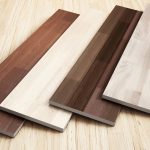
When selecting hardwood flooring, durability is often a top priority. This leads many to ask: Is maple flooring harder than oak? The short answer is yes—on the Janka hardness scale, maple scores higher than both red and white oak. Maple’s dense grain structure makes it more resistant to dents and scratches, which is especially beneficial in high-traffic environments like commercial spaces, busy homes, or retail settings. For both B2B buyers and individual homeowners, this added hardness can translate into longer-lasting floors with less visible wear over time.
That said, while a maple floor is technically harder, an oak floor offers advantages in other areas. Oak’s open grain makes it easier to stain and refinish, offering more design flexibility and easier maintenance when it comes to color matching or refinishing years down the line. Additionally, oak tends to hide scratches and dents better due to its grain pattern. So, the decision isn’t just about hardness—it also depends on your specific needs, whether aesthetic, functional, or budget-related. Understanding the pros and cons of both wood types can help guide smart flooring decisions for B2C clients and industry professionals alike.
Ultimately, Is maple flooring harder than oak? Yes—but that doesn’t automatically make it the better choice for every project. If you’re designing a sleek, modern commercial interior where a smooth, clean surface is key, a maple floor might be ideal. If you need a classic, warm-toned surface that’s easy to maintain and repair, an oak floor could serve you better. Both options are excellent in their own right, and the best flooring solution comes down to balancing durability, style, and functionality based on your space’s unique demands.




